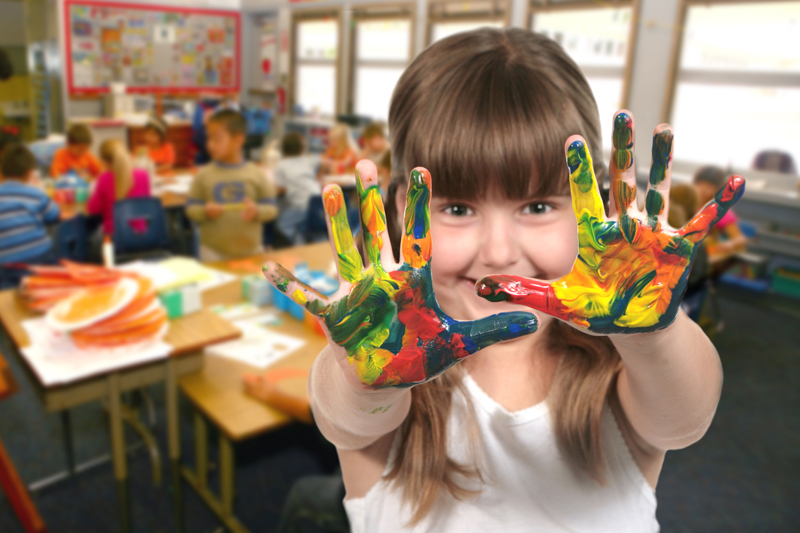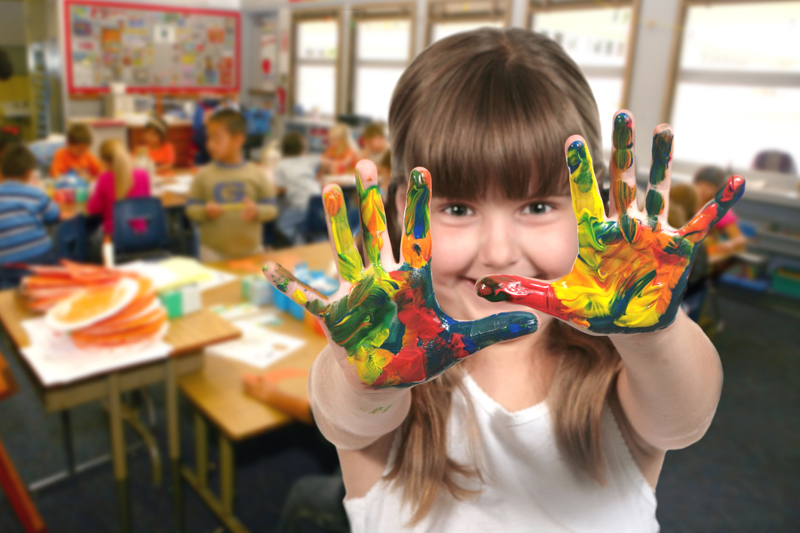Salt Dough Clay Recipe

Salt dough clay is a wonderful basic recipe to have in your craft repertoire. The ingredients are almost always on hand and it takes just a few minutes to whip up a batch of dough. The salt dough sculptures can be baked in the oven to harden and preserve them. After they are cooled, the sculptures can be painted if you wish.
Ingredients for salt dough clay:
4 cups of flour
1 cup salt
1 ½ cups warm water
How to make the clay:
Combine the flour and salt in a large bowl. Mix in the water with a wooden spoon. Once the dough is manageable, begin to work it with your hands to get it evenly moist. It helps to flour your hands to keep the dough from sticking to them. If the dough is too dry, add more water. If it's too wet and sticky, add more flour. You'll know the dough is ready when it holds together in a ball and is not too crumbly.
Turn the dough out onto a lightly floured surface and knead it until it is smooth and elastic. The kids can take turns with this; kneading is fun! Divide the dough among the kids, keeping any extra dough covered in plastic wrap to keep it from drying out.
Now it’s time to sculpt! I like to put each child's piece of dough on a paper plate to help contain the mess. Have kids sculpt the dough into whatever shape they’d like. We have made play food, napkin rings, seasonal shapes, and animal sculptures using this recipe.
When sculpting, remember that thinner pieces will bake faster. If your child makes a sculpture that involves joining pieces together, double-check that the joints are securely attached before baking. You can add a little water to smooth out the joints and help the pieces bond better. When the kids are done, place their sculptures on a foil-lined baking sheet and bake them at 325 degrees until the pieces feel hard. This may take anywhere from 20 minutes to an hour or more, depending on the thickness of the piece. When the sculpture is done it will not give when pushed on with the tip of a butter knife.
Let the pieces cool, then paint if desired. These make great gifts!
Ingredients for salt dough clay:
4 cups of flour
1 cup salt
1 ½ cups warm water
How to make the clay:
Combine the flour and salt in a large bowl. Mix in the water with a wooden spoon. Once the dough is manageable, begin to work it with your hands to get it evenly moist. It helps to flour your hands to keep the dough from sticking to them. If the dough is too dry, add more water. If it's too wet and sticky, add more flour. You'll know the dough is ready when it holds together in a ball and is not too crumbly.
Turn the dough out onto a lightly floured surface and knead it until it is smooth and elastic. The kids can take turns with this; kneading is fun! Divide the dough among the kids, keeping any extra dough covered in plastic wrap to keep it from drying out.
Now it’s time to sculpt! I like to put each child's piece of dough on a paper plate to help contain the mess. Have kids sculpt the dough into whatever shape they’d like. We have made play food, napkin rings, seasonal shapes, and animal sculptures using this recipe.
When sculpting, remember that thinner pieces will bake faster. If your child makes a sculpture that involves joining pieces together, double-check that the joints are securely attached before baking. You can add a little water to smooth out the joints and help the pieces bond better. When the kids are done, place their sculptures on a foil-lined baking sheet and bake them at 325 degrees until the pieces feel hard. This may take anywhere from 20 minutes to an hour or more, depending on the thickness of the piece. When the sculpture is done it will not give when pushed on with the tip of a butter knife.
Let the pieces cool, then paint if desired. These make great gifts!
You Should Also Read:
Bread Dough Sculptures
Peanut Butter Mouse Cookies

Related Articles
Editor's Picks Articles
Top Ten Articles
Previous Features
Site Map
Content copyright © 2023 by Kimberly Misra. All rights reserved.
This content was written by Kimberly Misra. If you wish to use this content in any manner, you need written permission. Contact Launa Stout for details.



